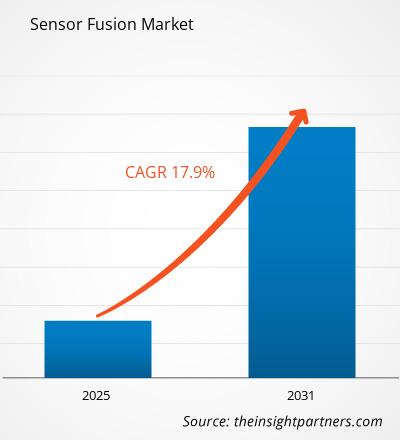Measuring the Global Medical Device Sterilization Market Size and Its Economic Relevance
The Medical Device Sterilization Market has grown significantly as healthcare providers prioritize infection control across hospitals, diagnostic centers, and laboratories. Market size expansion is directly correlated to the rising number of surgical procedures, the growing use of medical devices, and the increased prevalence of hospital-acquired infections. Moreover, the proliferation of single-use instruments has heightened the need for large-scale sterilization operations. The demand for sustainable sterilization technologies that minimize environmental and chemical impact is also expanding the market’s financial base, pushing manufacturers toward greener solutions.
Get Full Reports :https://www.marketresearchfuture.com/reports/medical-device-sterilization-market-27703
Based on the Medical Device Sterilization Market Size
report, continuous investments in sterilization infrastructure, digital automation, and compliance management systems are enhancing market efficiency and capacity. The global value of this market reflects its critical role in maintaining healthcare quality and safety standards. The ongoing modernization of hospitals, particularly in emerging economies, ensures that sterilization remains a central component of medical device manufacturing and distribution.
FAQs
Q1. How large is the global Medical Device Sterilization Market?
It is expanding rapidly due to the increase in medical device usage and global infection prevention programs.
Q2. What influences market size growth?
Technological innovation, healthcare infrastructure expansion, and environmental sustainability efforts.
Q3. Why is sterilization essential to global healthcare economics?
It supports patient safety, prevents costly infections, and ensures regulatory compliance.
Q4. Which industries contribute most to the market size?
Hospitals, pharmaceutical firms, and contract sterilization providers.
The Medical Device Sterilization Market has grown significantly as healthcare providers prioritize infection control across hospitals, diagnostic centers, and laboratories. Market size expansion is directly correlated to the rising number of surgical procedures, the growing use of medical devices, and the increased prevalence of hospital-acquired infections. Moreover, the proliferation of single-use instruments has heightened the need for large-scale sterilization operations. The demand for sustainable sterilization technologies that minimize environmental and chemical impact is also expanding the market’s financial base, pushing manufacturers toward greener solutions.
Get Full Reports :https://www.marketresearchfuture.com/reports/medical-device-sterilization-market-27703
Based on the Medical Device Sterilization Market Size
report, continuous investments in sterilization infrastructure, digital automation, and compliance management systems are enhancing market efficiency and capacity. The global value of this market reflects its critical role in maintaining healthcare quality and safety standards. The ongoing modernization of hospitals, particularly in emerging economies, ensures that sterilization remains a central component of medical device manufacturing and distribution.
FAQs
Q1. How large is the global Medical Device Sterilization Market?
It is expanding rapidly due to the increase in medical device usage and global infection prevention programs.
Q2. What influences market size growth?
Technological innovation, healthcare infrastructure expansion, and environmental sustainability efforts.
Q3. Why is sterilization essential to global healthcare economics?
It supports patient safety, prevents costly infections, and ensures regulatory compliance.
Q4. Which industries contribute most to the market size?
Hospitals, pharmaceutical firms, and contract sterilization providers.
Measuring the Global Medical Device Sterilization Market Size and Its Economic Relevance
The Medical Device Sterilization Market has grown significantly as healthcare providers prioritize infection control across hospitals, diagnostic centers, and laboratories. Market size expansion is directly correlated to the rising number of surgical procedures, the growing use of medical devices, and the increased prevalence of hospital-acquired infections. Moreover, the proliferation of single-use instruments has heightened the need for large-scale sterilization operations. The demand for sustainable sterilization technologies that minimize environmental and chemical impact is also expanding the market’s financial base, pushing manufacturers toward greener solutions.
Get Full Reports :https://www.marketresearchfuture.com/reports/medical-device-sterilization-market-27703
Based on the Medical Device Sterilization Market Size
report, continuous investments in sterilization infrastructure, digital automation, and compliance management systems are enhancing market efficiency and capacity. The global value of this market reflects its critical role in maintaining healthcare quality and safety standards. The ongoing modernization of hospitals, particularly in emerging economies, ensures that sterilization remains a central component of medical device manufacturing and distribution.
FAQs
Q1. How large is the global Medical Device Sterilization Market?
It is expanding rapidly due to the increase in medical device usage and global infection prevention programs.
Q2. What influences market size growth?
Technological innovation, healthcare infrastructure expansion, and environmental sustainability efforts.
Q3. Why is sterilization essential to global healthcare economics?
It supports patient safety, prevents costly infections, and ensures regulatory compliance.
Q4. Which industries contribute most to the market size?
Hospitals, pharmaceutical firms, and contract sterilization providers.
0 التعليقات
0 المشاركات
190 مشاهدة
0 معاينة



